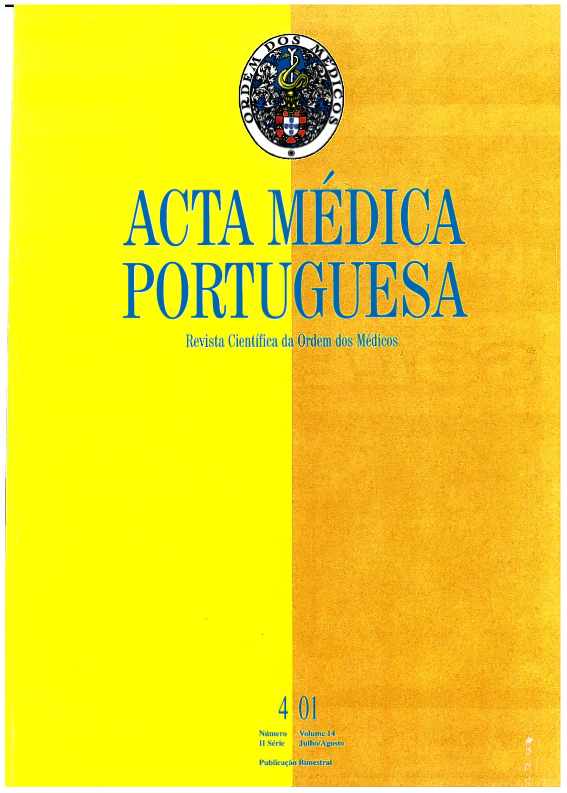Avaliação da analgesia após cesariana.
DOI:
https://doi.org/10.20344/amp.1864Resumo
The aim of this study was to evaluate the efficacy of post-caesarean analgesia comparing three techniques most frequently used.For three months all pregnant women submitted to elective or urgent caesarean section, under general or regional anaesthesia, were evaluate with a total of 129 parturient. These parturient were divided into three groups with different techniques of postoperative analgesia: Group 1 (n = 26) received intravenous pethidine and paracetamol per os, group 2 (n = 58) received epidural morphine and group 3 (n = 45) epidural morphine and intravenous propacetamol. Pain was assessed at rest and during mobilisation using a scale of 0-without pain, 1-mild pain, 2-moderate pain and 3-severe pain. Overall satisfaction was assessed with a verbal qualitative scale of very good, good, sufficient and bad. Side effects were analysed.The records of pain at rest and during mobilisation were significantly lower with epidural analgesia compared with intravenous pethidine. There were no significant differences between groups 2 and 3. Similar results were observed in the degree of satisfaction. For 50% of parturient of epidural analgesia (groups 2 and 3) and only 4% of intravenous pethidine (group 1) the analgesic technique was very good. Propacetamol and epidural morphine (group 3) had better pain scores (very good and good) when compared with morphine alone (group 2) but there were no significant differences. Epidural morphine was associated with more pruritus.From this study we are able to conclude that epidural morphine offers a good quality of analgesia with better satisfaction and minimal side effects.Downloads
Downloads
Como Citar
Edição
Secção
Licença
Todos os artigos publicados na AMP são de acesso aberto e cumprem os requisitos das agências de financiamento ou instituições académicas. Relativamente à utilização por terceiros a AMP rege-se pelos termos da licença Creative Commons ‘Atribuição – Uso Não-Comercial – (CC-BY-NC)’.
É da responsabilidade do autor obter permissão para reproduzir figuras, tabelas, etc., de outras publicações. Após a aceitação de um artigo, os autores serão convidados a preencher uma “Declaração de Responsabilidade Autoral e Partilha de Direitos de Autor “(http://www.actamedicaportuguesa.com/info/AMP-NormasPublicacao.pdf) e a “Declaração de Potenciais Conflitos de Interesse” (http://www.icmje.org/conflicts-of-interest) do ICMJE. Será enviado um e-mail ao autor correspondente, confirmando a receção do manuscrito.
Após a publicação, os autores ficam autorizados a disponibilizar os seus artigos em repositórios das suas instituições de origem, desde que mencionem sempre onde foram publicados e de acordo com a licença Creative Commons









